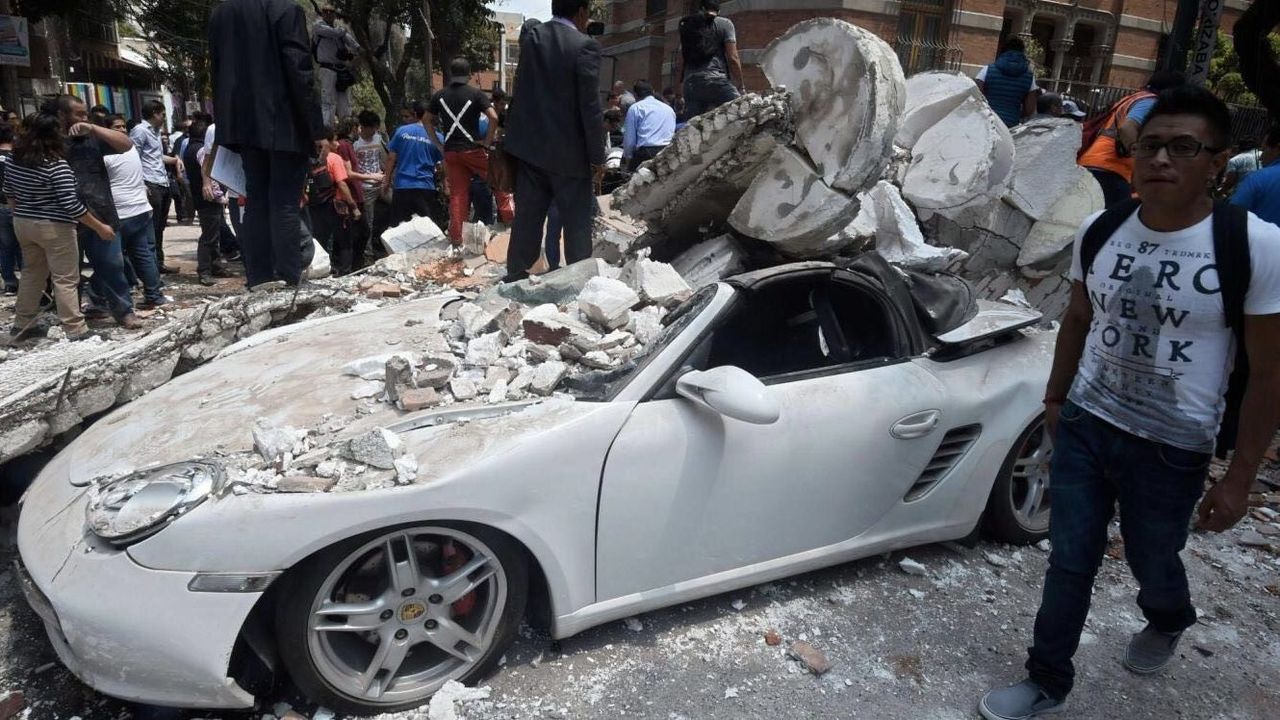
Mexico was struck again on the anniversary of the biggest earthquake
The epicentre of an earthquake was in the state of Puebla, at a depth of 51 kilometres, about 120 kilometres from the city of Mexico. It was felt by the inhabitants of the states: Mexico, Puebla, Morelos and Guerrero. The seismic alarm in the capital did not work.
The earthquake struck Mexico at 1:14 pm on September 19.
– When it all started, I was on the sixteenth floor of my office – recalls Ruben Breton from the city of Mexico. – The quakes were getting stronger with every second. My colleagues began to cry, one of them was praying. I had to calm them down, although I was afraid myself because it was the worst earthquake I remember.
About 27 buildings collapsed in the capital city, many were damaged and the road to one of the airport’s terminals has also been seriously destroyed. In one of the damaged schools, 26 children were killed and 30 were reported missing. At the time of sending the message to the editorial office, over three million people found themselves without electricity (including an Outriders’ reporter, who found a shelter at her friends’ place) and without an access to the Internet. The gas was turned on in many buildings and it began to volatilize.
Alejandra Ruiz was in her apartment when she saw the books on her shelf shaking – As for me this earthquake was stronger than the last one [September 7, 2017, 8.1 magnitude on the Richter scale] as its epicentre was closer to the capital city, where I live. Honestly, I thought it is time to die.
After the earthquakes chaos erupted in the city of Mexico. Air traffic was limited, and planes were directed to other cities. Students, pupils and employees went home earlier so it brought the entire city to a standstill. A lot of people, afraid of the returned quakes, took their children to one-storey restaurants and parks.
– On Wednesday all my employees will work remote from their homes – says Ruben Breton. Residents of the cities of Mexico, Puebla and Morelos help to declutter the ruined buildings. “If you do not have anywhere to go, come to us. There is water, food, electricity and the Internet in our apartment”- wrote Larry Reilly, a resident of the capital, on his Facebook account. Private hospitals began to provide free medical help, and some mobile networks launched free telephone calls.
Seismic alarm did not work
Mexico was rocked on the anniversary of the 8.1 earthquake on the Richter scale that hit the country in 1985. At that time, the epicentre was located over 350 kilometres from the capital, in the Pacific Ocean. But it was Mexico City that suffered the most. Over 10,000 people were killed and 250,000 were homeless.
That is why a seismic simulation in case of an earthquake was organized yesterday at 11.00 in Mexico. Workers, students, pensioners, parliamentarians left their homes and workplaces to practice how they should behave in case of such a danger. That is how they wanted to commemorate the victims of the earthquake that happened 32 years ago. However, in the states of Mexico, Michoacan, Guerrero, Oaxaca and Puebla, the seismic alarm was not switched on, in order not to bother the residents who suffered in the earthquake that took place on September 7 this year. More than 100 people died at that time.
Two hours after the seismic simulation, there was a real earthquake, but the alarm did not turn on again and it did not warn the residents of the danger.
The Pacific ring of fire
Mexico is located in the area of frequent earthquakes and volcanic eruptions that surrounds the Pacific Ocean. The Pacific ring of fire covers almost a continuous belt of oceanic trenches along the coasts of the Americas, East Asia and the Kermadec and Tonga trenches. 90% of all earthquakes happens there, there are 75% of active volcanoes and 452 craters.
Except Mexico, the areas most threatened by the earthquakes are: Japan, Ecuador, Chile, the United States, Peru, Bolivia, Ecuador, Colombia, Panama, Costa Rica, Nicaragua, El Salvador, Honduras, Guatemala and Canada.
In addition, there are five tectonic plates in the Pacific Ocean, off the coast of Mexico: North American plate, Coconut plate, Rivera plate, Caribbean plate and Pacific plate. When two or more of them meet, they cause a seismic activity.
According to the research made by the National Autonomous University of Mexico (UNAM), more than 100 earthquakes with a magnitude of 4.5 on the Richter scale happened year by year in the 20th century, 5 earthquakes with a magnitude of 6.5 on the Richter scale within every four years and at least one earthquake equal to or greater than 7.5 on the Richter scale within every ten years. Seismologists are not able to predict where the next earthquakes will occur and how strong will they be.























